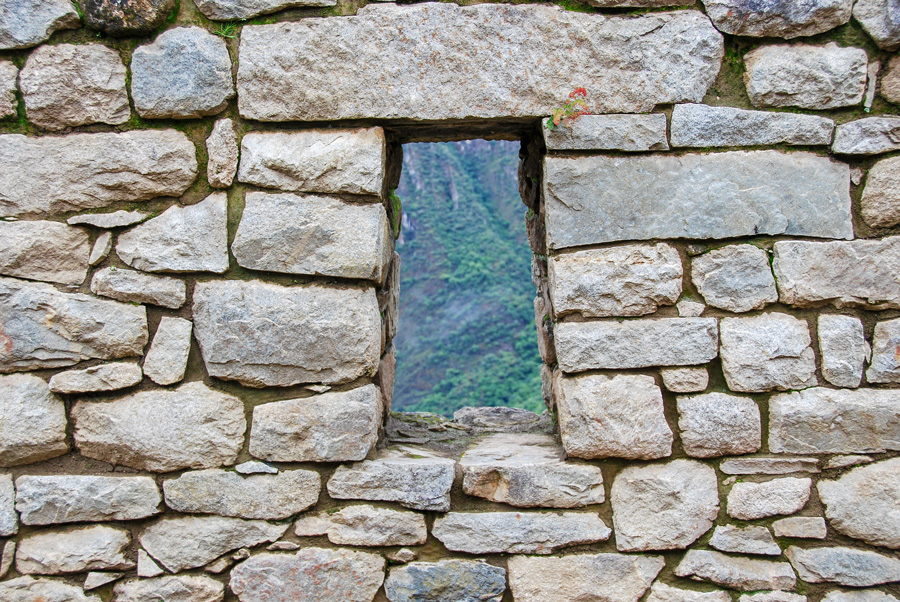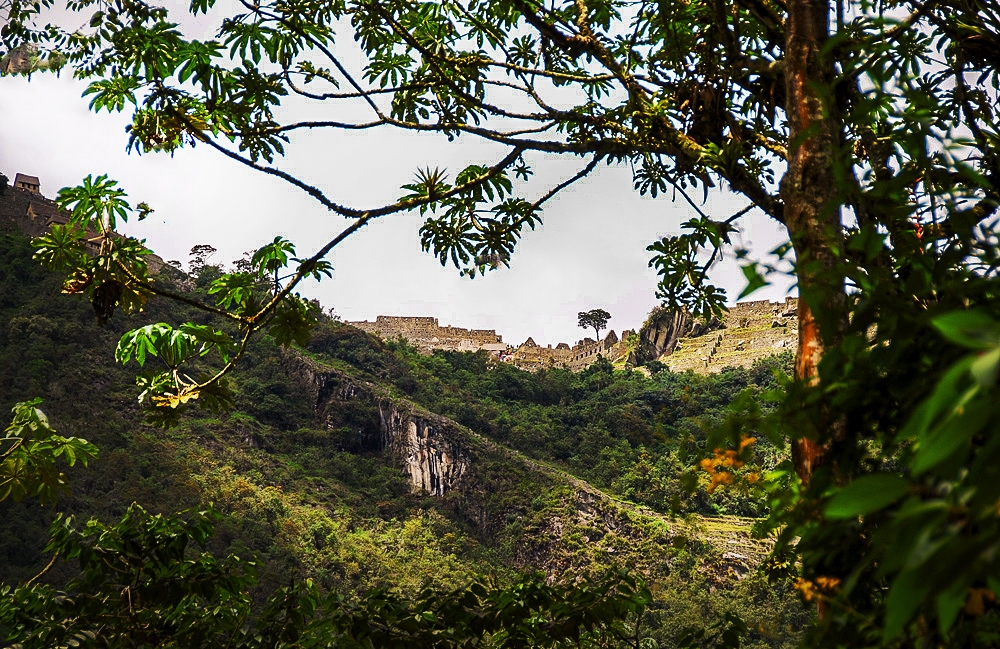
How to get the most out of your trip to Machu Picchu
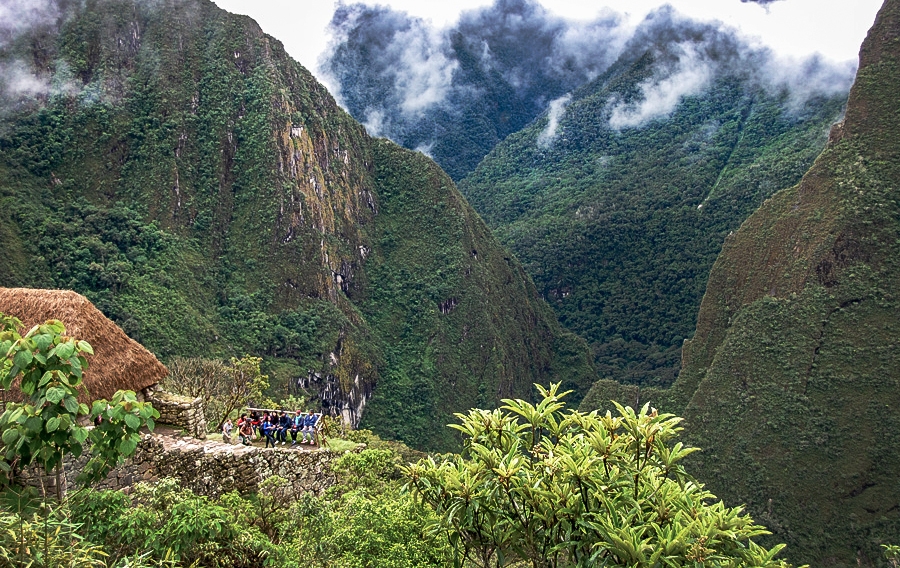
Contents
Map • Introduction • Inca Rail from Ollantaytambo to Aguas Calientes • Aguas Calientes • Bus to Machu Picchu • Wayna Picchu • Animals of Machu Picchu • The Construction of Machu Picchu • Ceremonial Baths • Temple of the Sun • Temple of Condor • The Royal Sector • Intihuatana Stone • The Querry • Agricultural Terraces • Machu Picchu City Plan • Facts about Machu Picchu
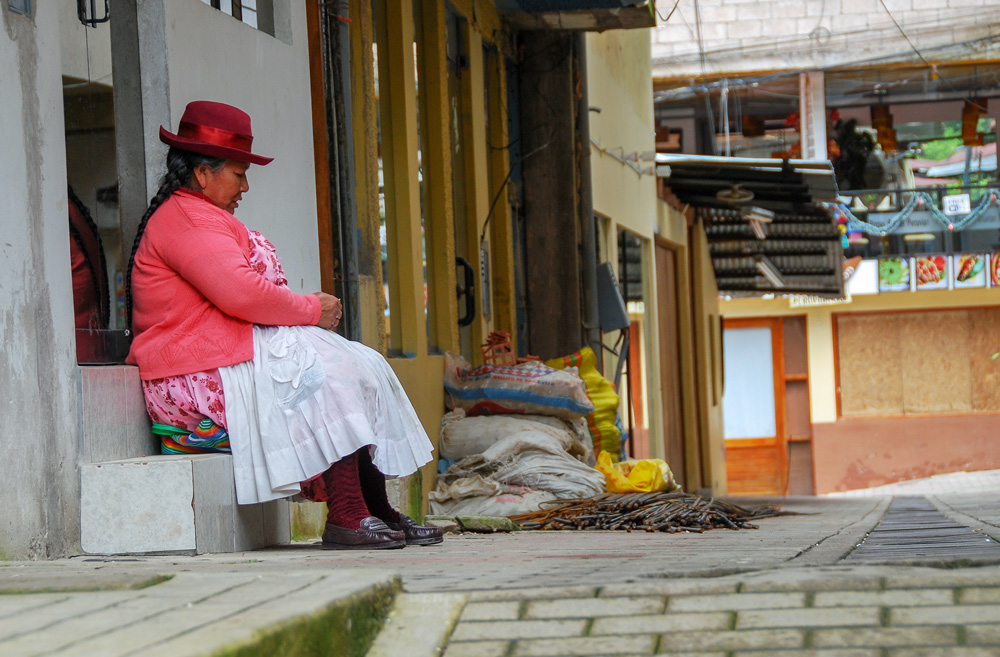
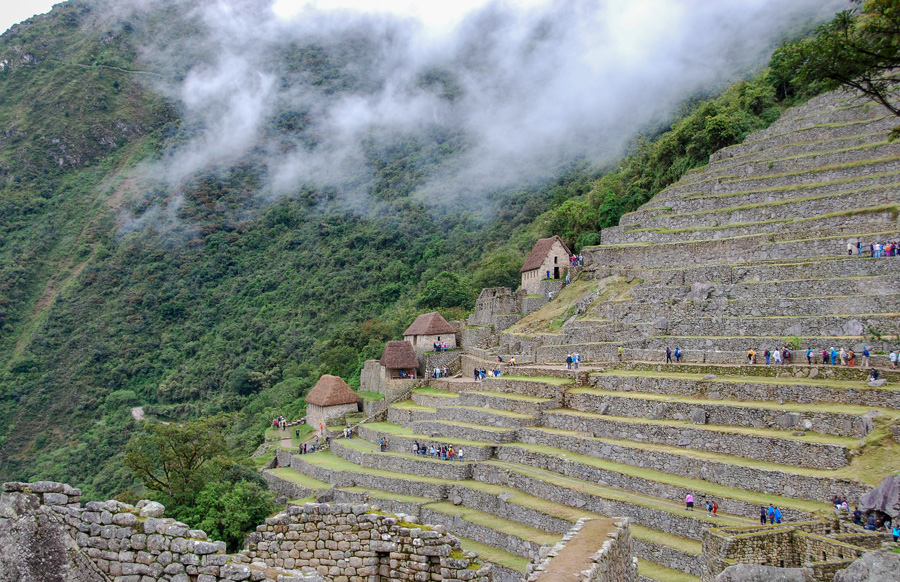
Map of Machu Picchu
Introduction
Our trip to Machu Picchu was part of a round trip in Peru. A round trip has lots of pros but even lots of cons. You will get up in the middle of the night and sit in the bus for hours before arriving to the next stop.
Also, the visit to Machu Picchu was scheduled as the last stop of the trip so we started to get a little bored by all the piles of stones our guide so happily showed us.
This travel guide to Machu Picchu starts in Ollantaytambo where we take the train to our destination.
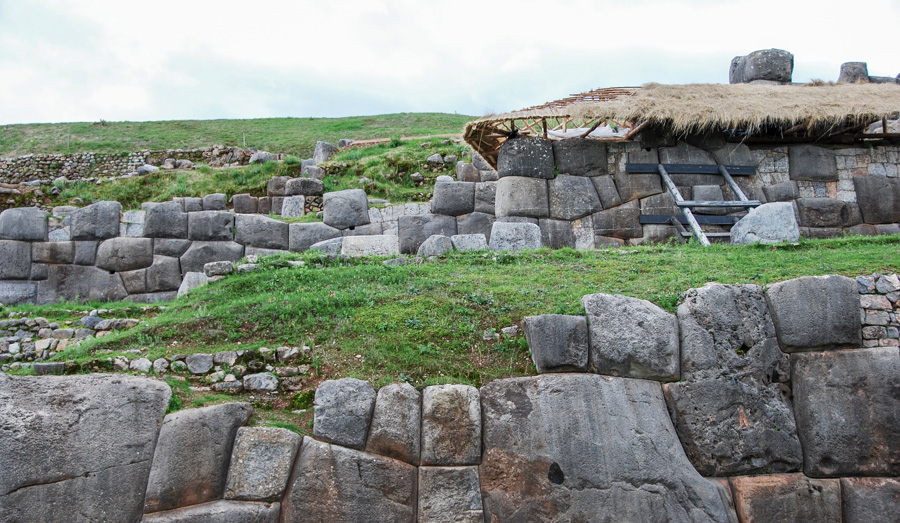
Cusco
In retrospect, I would skip the round trip, stay a few days in Cusco at a nice hotel and plan excursions from there.
Cusco is a really pretty town and the range of good restaurants varies from casual settings to fine dining.
And – Cusco is a great destination to celebrate the New Year, as we did. Everybody ends up at the Plaza de Armas, watching the fire works while eating 12 grapes for good luck. The athmesphere is friendly, a little crazy and quite something else!
We stayed at José Antonio Cusco Hotel, which was a nice enough 4 star hotel.
Buy tickets to Machu Picchu well in advance
If you are planning to make this trip on your own bear in mind that you need tickets to get into Machu Picchu and you need to purchase them months in advance. The same goes for the train tickets. I think it would be a good idea to book a guide as well so you don’t miss any of the good stuff.
Only 2 000 visitors a day are allowed to enter Machu Picchu.
We took the train from the tiny village of Ollantaytambo to Aguas Calientes and from there a bus up to Machu Picchu.
By the way, the city plan of Ollantaytambo is from the inca times.
The best time to go to Machu Picchu
What is the best month to travel to Machu Picchu, you may wonder?
We went in the end of December and it was great. There are fewer tourists and even though the temperature is a little lower it doesn’t matter – you just put on a warm jacket and you will be fine.
However, I would not recommend a trip in February because it rains a lot and the roads will be really muddy. Which means that you might not be able to access Machu Picchu at all.
Inca Rail from Ollantaytambo to Aguas Calientes
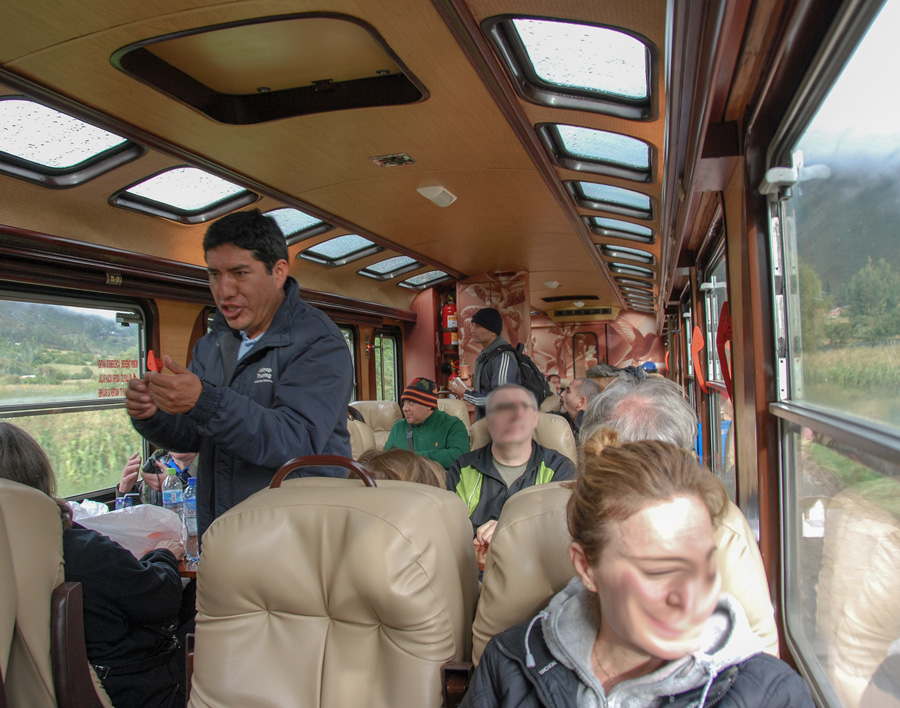
It takes 2 hours by train from Ollantaytambo, the Sacred Valley of the Inca, to Aguas Calientes.
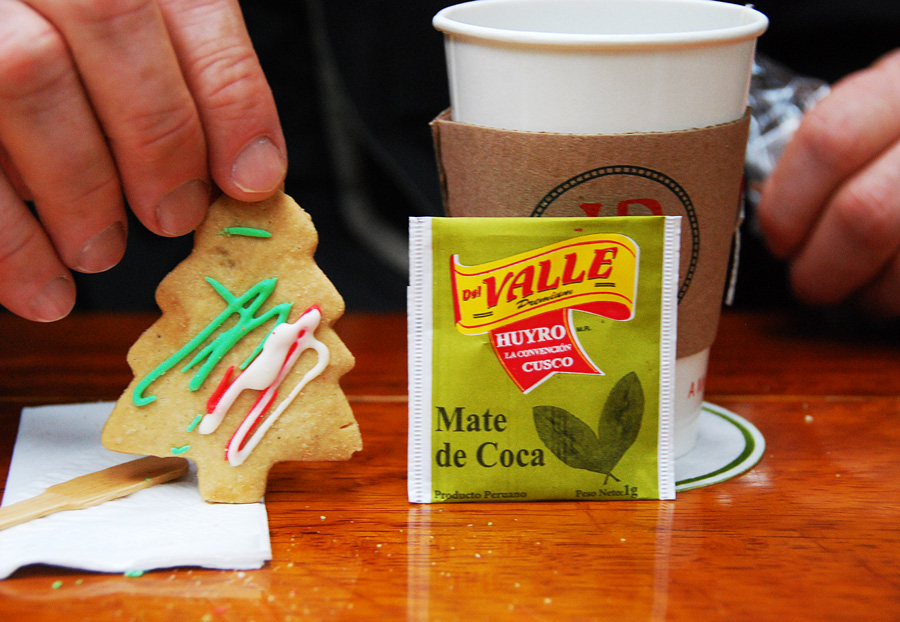
You have time to enjoy a cup of coca tea while the uber beautiful Urubamba Valley passes by.
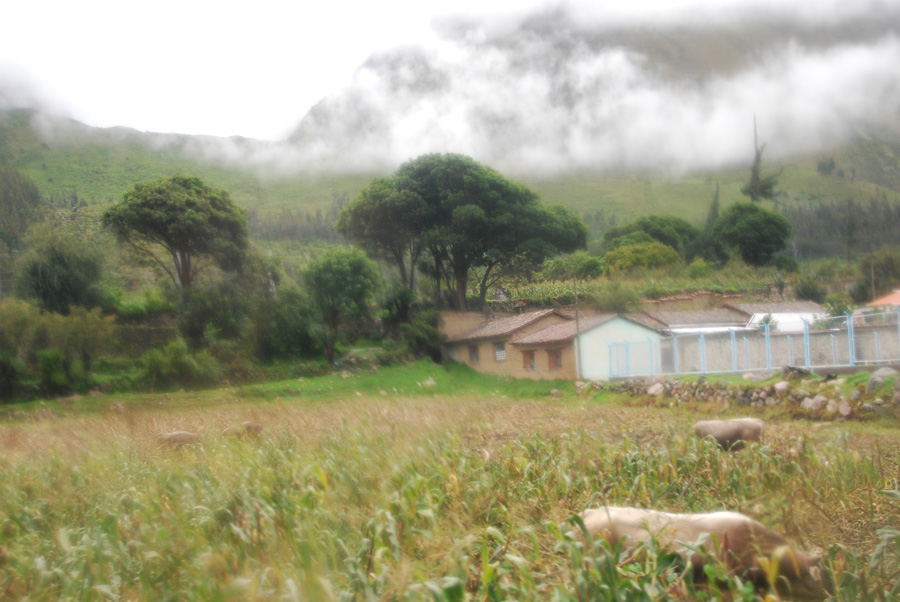
The Urubamba Valley is called “the grain store of the Inca”. The soil is fertile and gives a lot of harvest.
Aguas Calientes
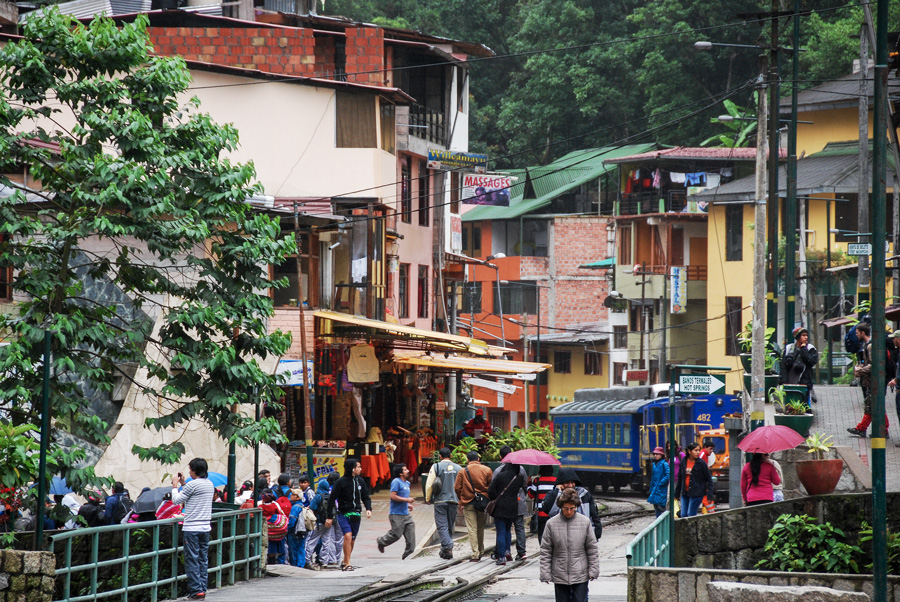
We stayed one night at Hatun Inti Boutique Hotel, not too bad a 3 star hotel (even though I am not quite sure where the boutique part comes in).
Where to eat in Aguas Calientes? If you crave for typical Peruvian cooking head to Chullpi Restaurant at 140 Av Imperio de los Incas.
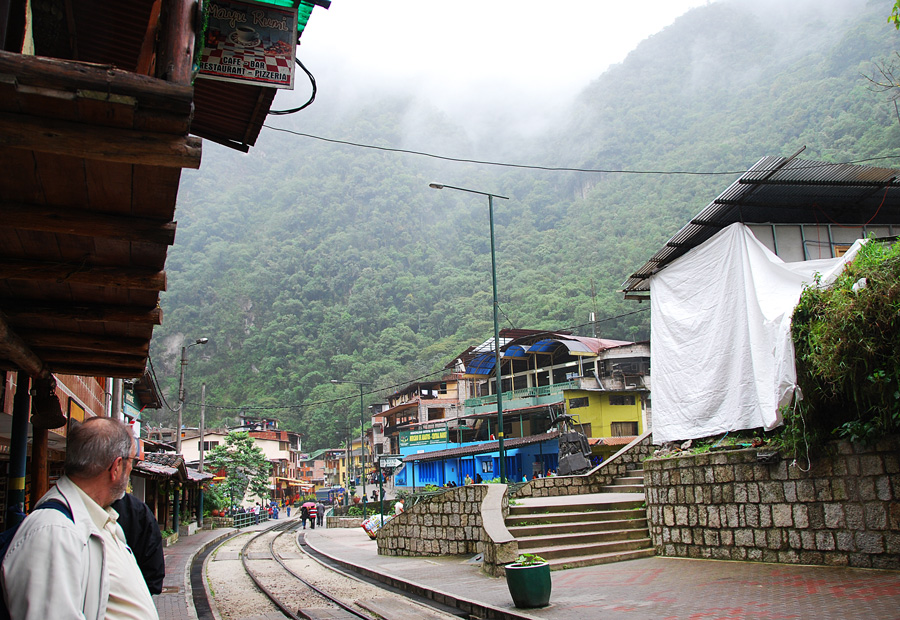
Stay one night in Aguas Calientes (not longer!) and soak up the athmesphere, stroll around, visit the Machu Picchu Botanical Garden.
Taking the bus to Machu Picchu
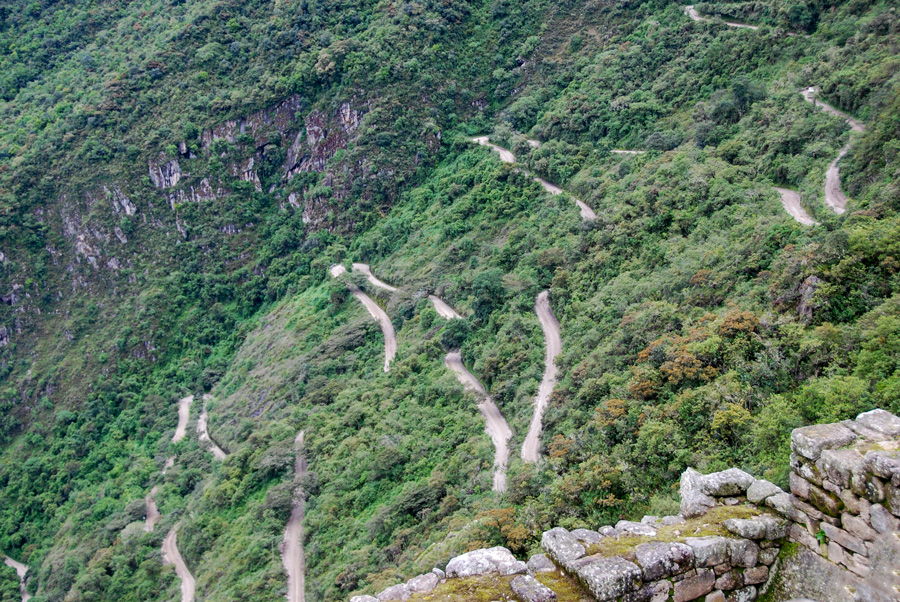
It takes approximately one hour before we reach Machu Picchu on a grey and cold day.
Just the bus trip on its own on the slippery, winding road is clearly an exciting moment and the higher up we get the less I want to look at the view. We are now about 2 000 meters above the sea level and it is a loooong way down.
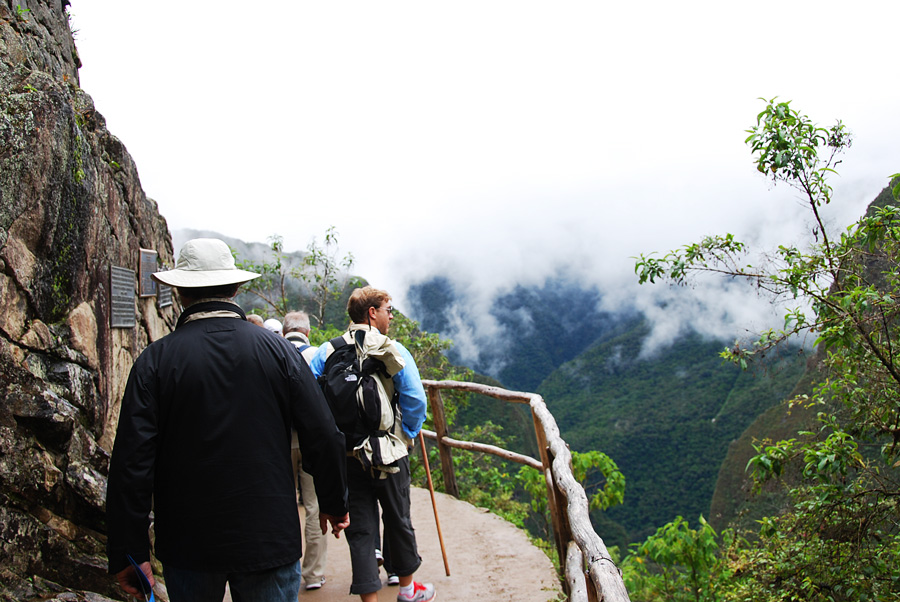
The entrance.

The Guardhouse by the entrance. The guards decided who could enter and who was to stay outside the city wall.
Wayna Picchu
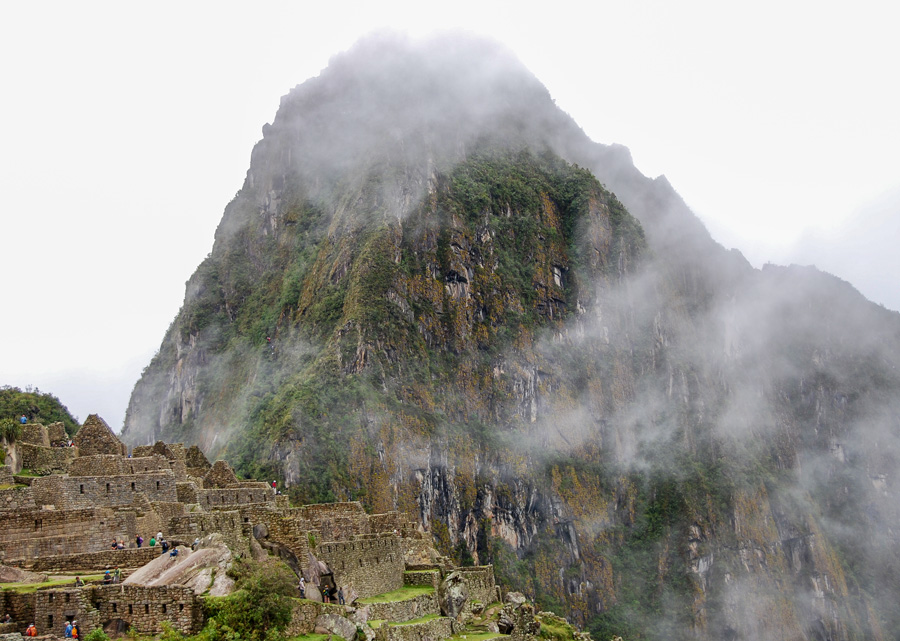
A hot tip for the picky adventurer: Try climbing up the Wayna Picchu. Small stone-cut steps lead you to the top and the so called “Seat of the Inca”. It is believed that the Inca climbed up here every morning to greet the rising sun and to worship the sun god Inti.
If you reach to the top which is 2693 meters above the sea level – the stairs are called the Stairs of Death (Youtube link) – an indescribable view over the city of the Incas and the Urubamba river awaits you. The climb takes approximately an hour (one way).
I am scared of hights and a sissy so the climb was not for me.
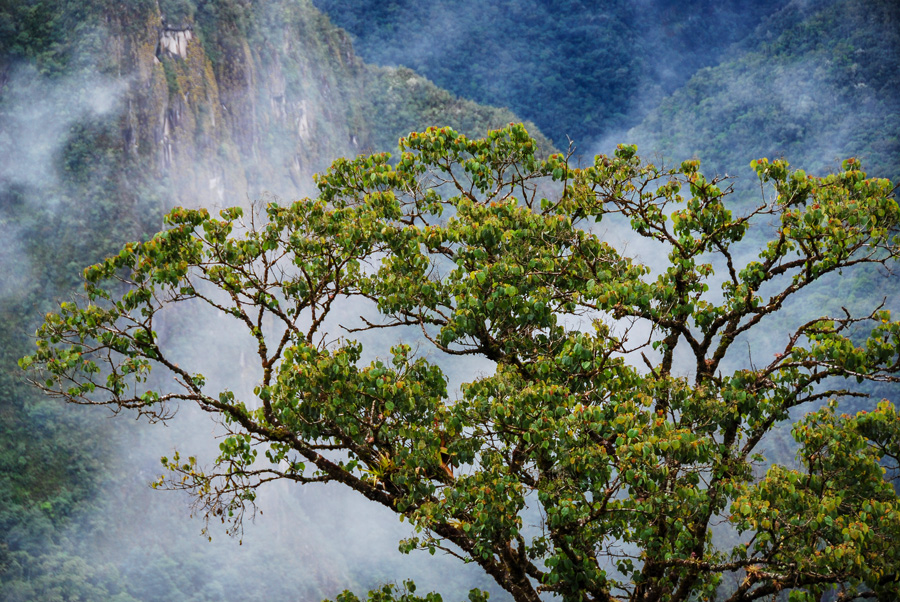
Machu Picchu lies in the middle of a cloud forest and is surrounded almost entirely by the Urubamba river.
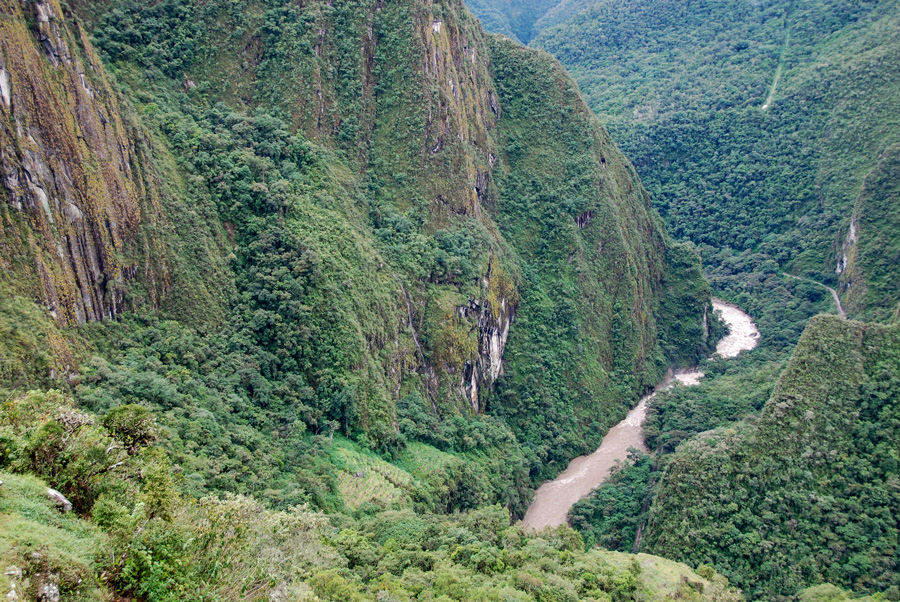
Animals at Machu Picchu
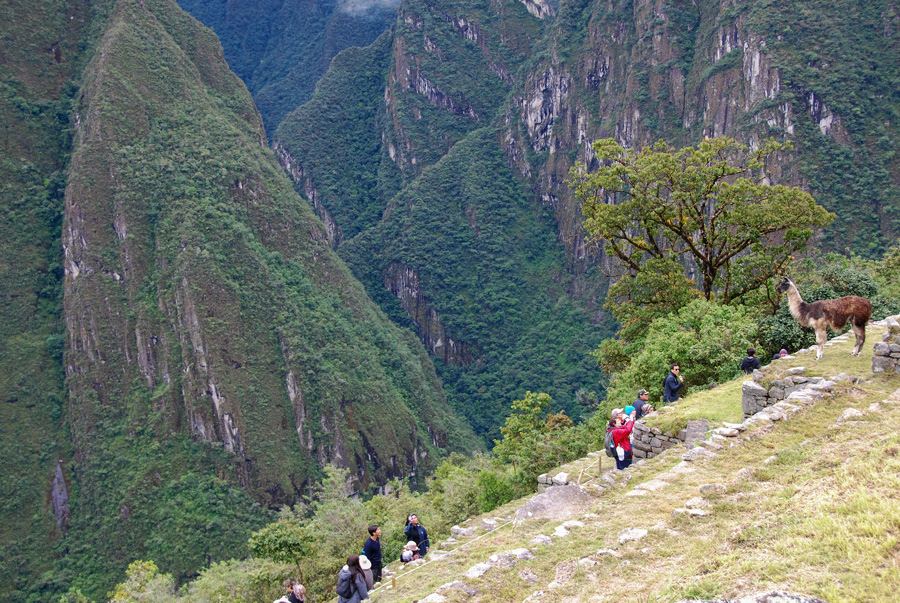
You will find lots of alpaca and lama in Machu Picchu. Even though these two animals are of the same species they are very different in nature – the lama is actually a guard animal and is used to guard sheep and other livestock.
Alpacka, on the other hand, is a flight animal.
If you get lucky you will see a glimpse of the condor. To see this majestatic animal to fly is supposed to be a good omen because the bird is the messenger of gods.
Construction Method
Machu Picchu is divided in two sectors: The agricultural sector and the city sector. These sectors are divided into different districts where those with higher status, ie. the Inca, the priests and the royal family, resided at the highest level. The lower classes, ie. the artisans and the farmers, lived on a lower level.
The division was very strict and you were not supposed to leave your area.
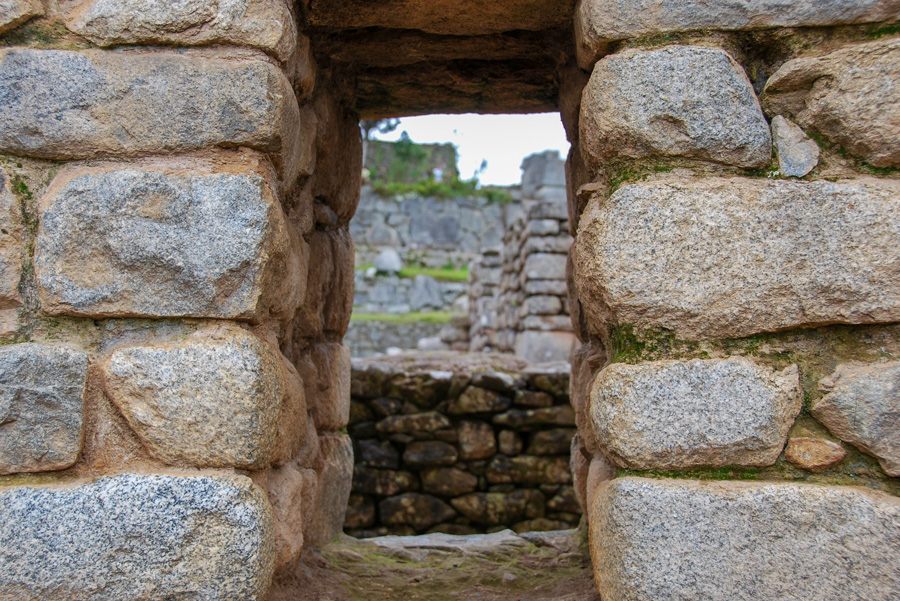
The Incas were intelligent and excellent contractors. They built a magnificiant city of boulders weighing more than 50 tons without even using a mortar – at almost 3 000 meters above sea level. Some of the boulders were cut from the bedrock of the mountain ridge right there and then and some of them were rolled up the mountain by hundreds of men. Since the Incas didn’t know the wheel they used tree trunks to move the big granite blocks.
Thanks to the brilliant buildning techmique the walls stood steadily even during an earth quake.

Ceremonial Baths
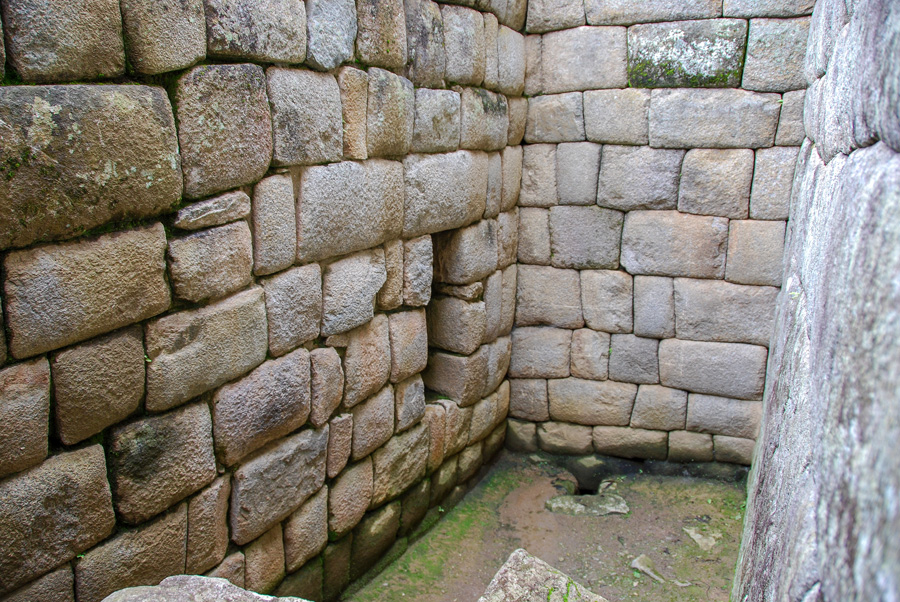
16 Ritual Fountains lie in series on the slopes, and are easily filled up when the water runs down.
It is suggested that the fountains were used for liturgigal baths by the high society. The first one, highest up, belonged to the Emperor, of course, so that he would get the cleanest water.
The Temple of the Sun
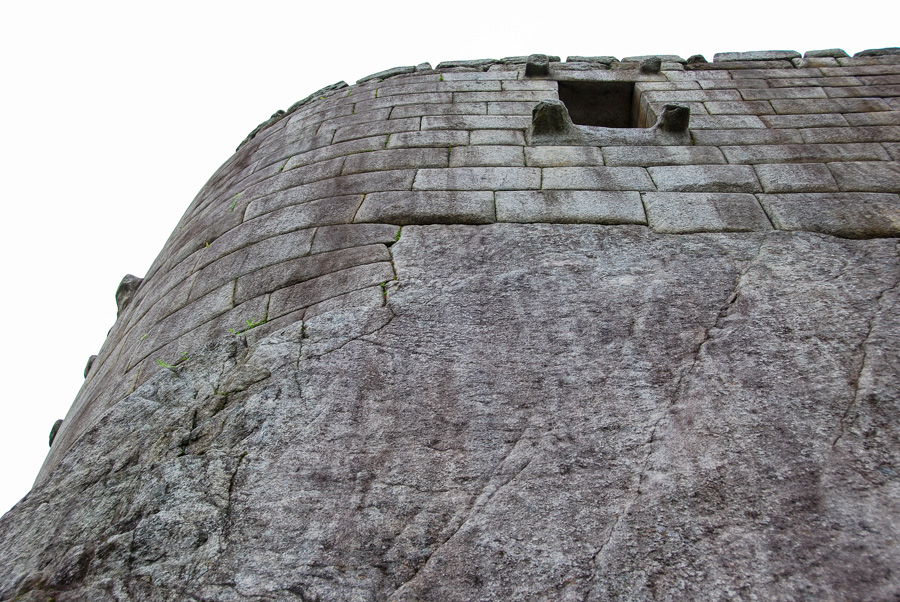
Temple of the Sun was a central spot for different happenings and religious ceremonies.

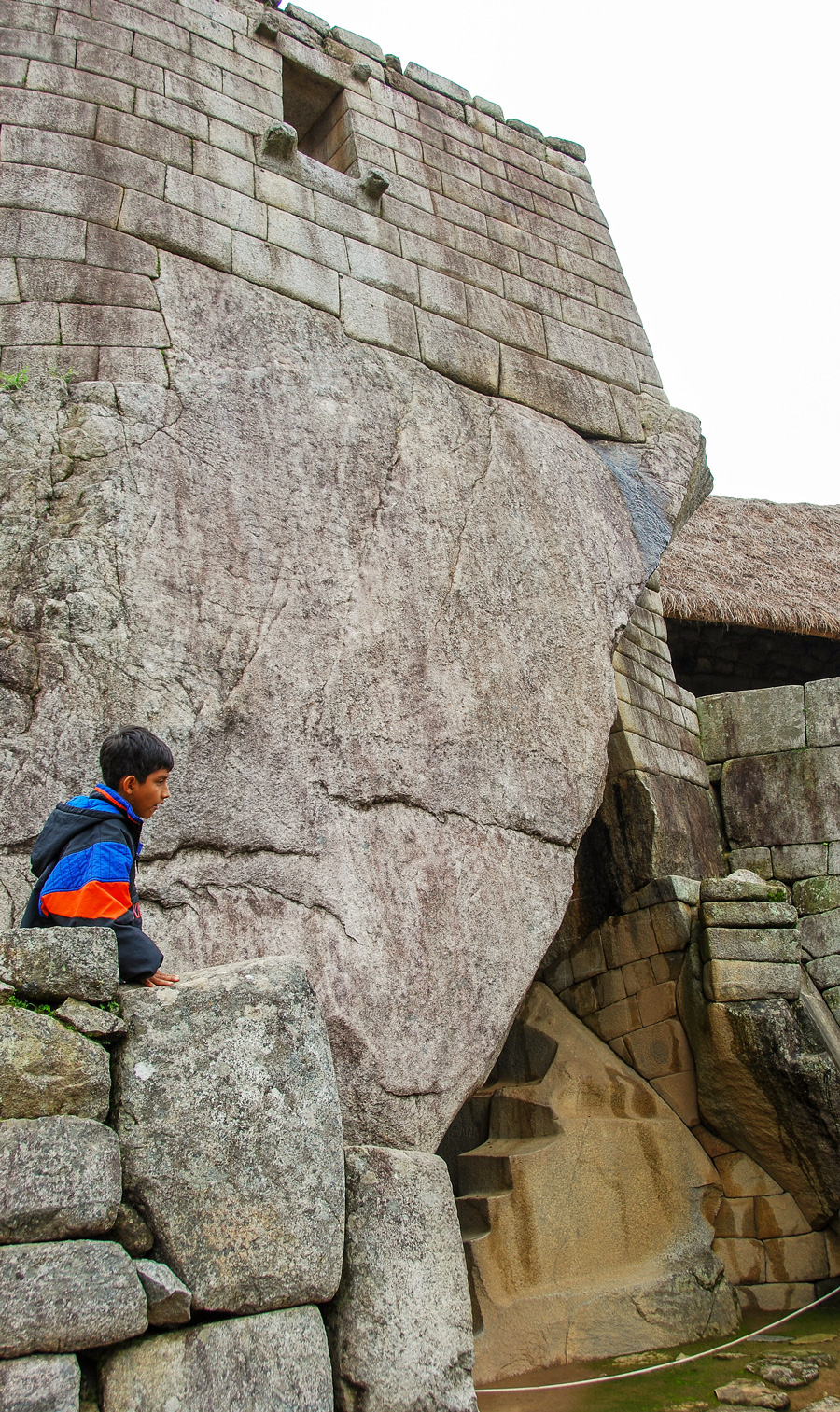
The Royal Tomb is located under the Temple of the Sun. Here, the members of the Royal family were buried.
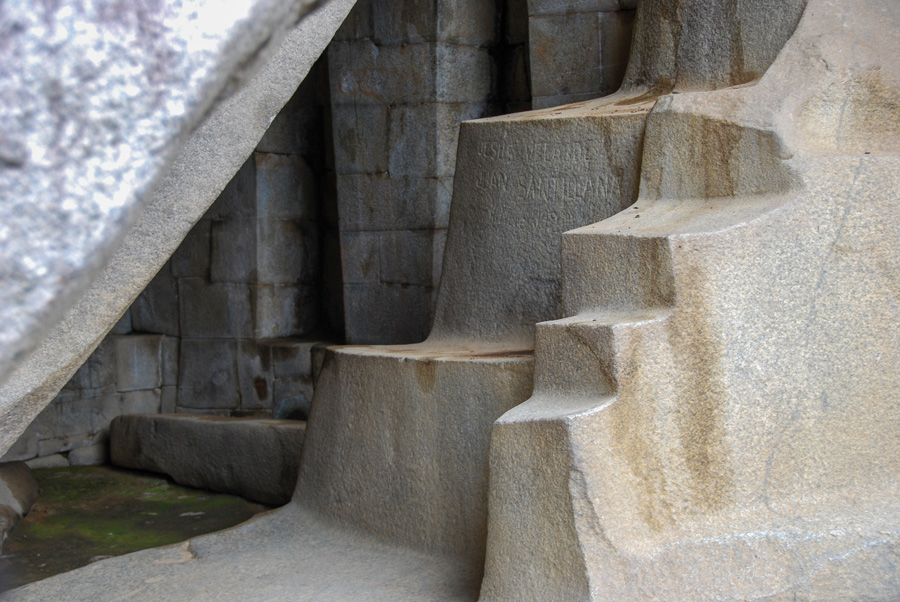
The Temple of Condor
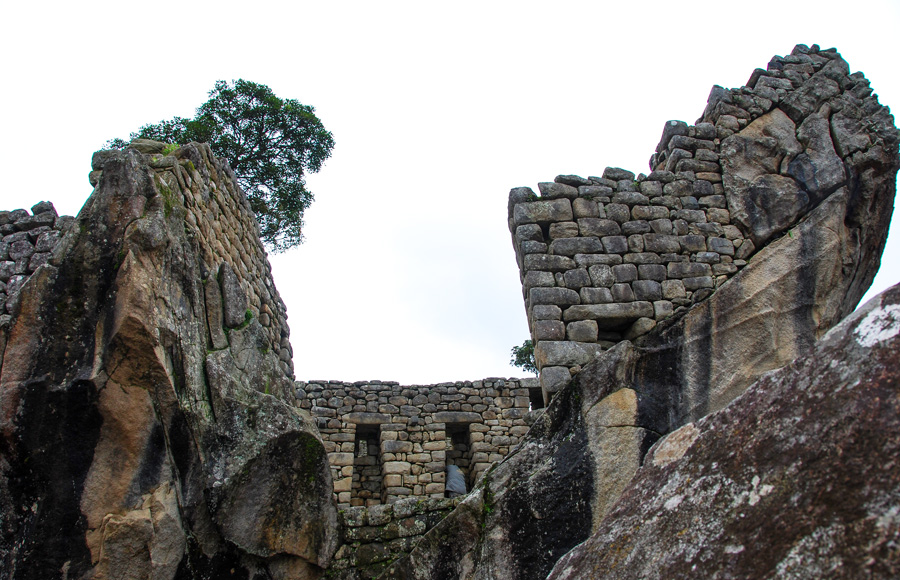
Temple of Condor. The condor was a sacred bird and it was commonly believed that the animal was so strong it could fly all the way up to heaven.
There is a stone figure in front of the temple depicting a condor with widespread wings.
You will aslo find a prison site behind the temple and a network of underground dungeons underneath.
The Royal Sector
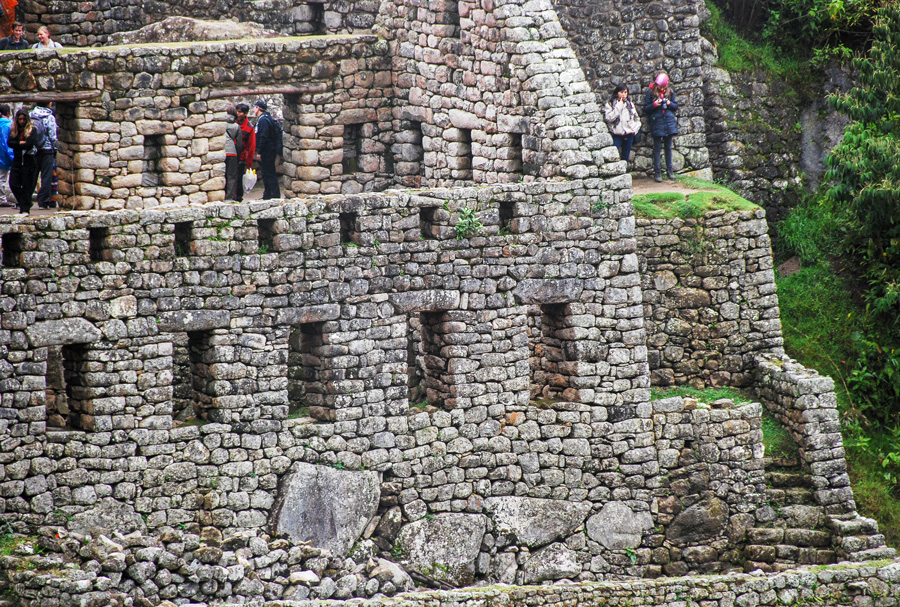
The Royal Group was strictly reserved for the aristocracy. Here the houses are bigger and have larger rooms.
Intihuatana Stone
At the top of the sacred mountain stands the Intihuatana Stone (link to Wikimapia) – the sun altar or sundial. The Inka worshipped the sun and they held important ceremonies by the stone, inter alia, at the time of winter solstice.
The stone is sacred and it radiates good energy so do not forget to touch it.
A word of warning, though. It is really, really high at the top of the pyramide and you will not notice how high it gets when you are climbing the stairs. There is no security fence around the plateau and when you look down you will not see the bottom. This, together with the thin air, made me panic, for real. I felt how the surface shrank and shrank and I couldn’t move. Finally, the poor guide took pity on me and helped me crawl back on solid ground while the tears were running down my cheeks.
The Querry
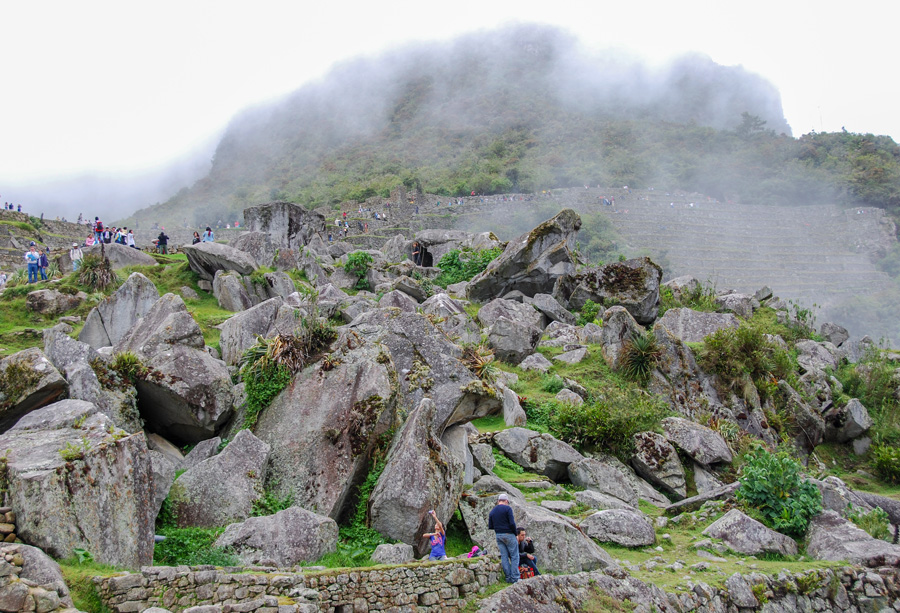
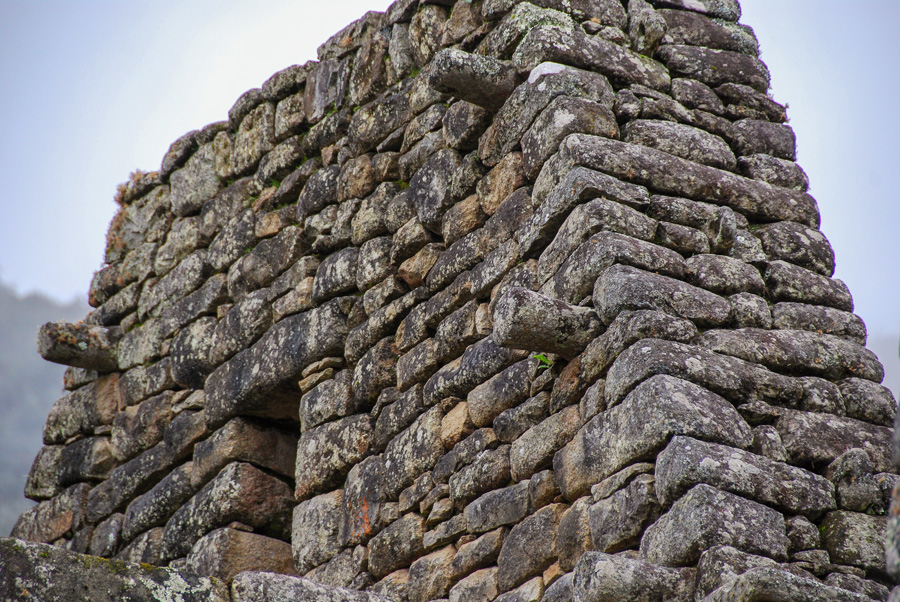
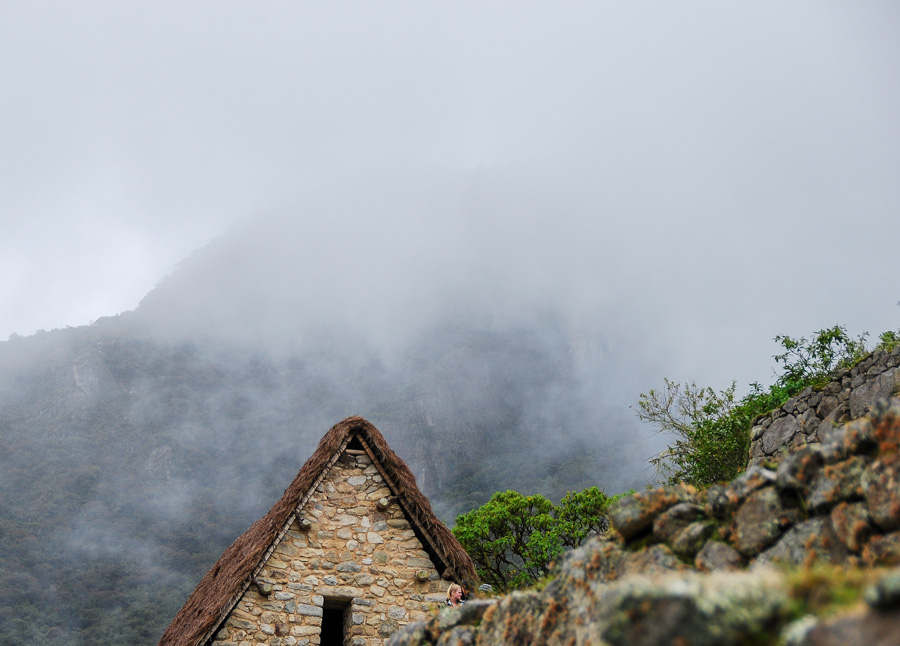
Agricultural Terraces
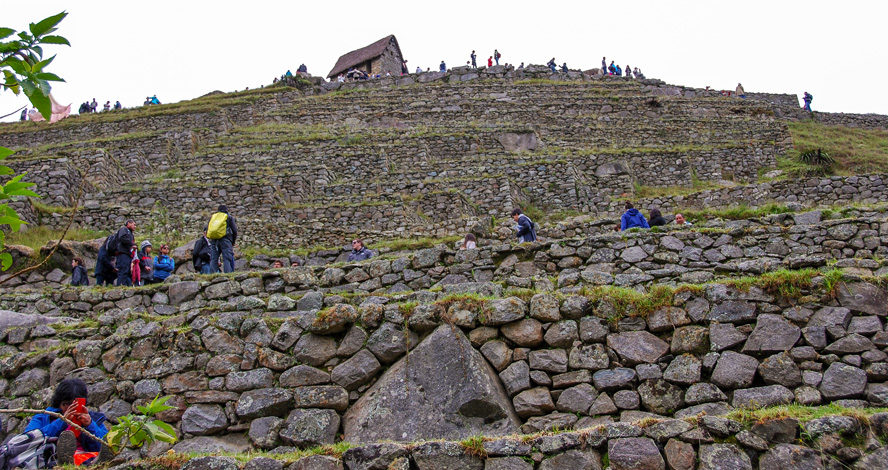
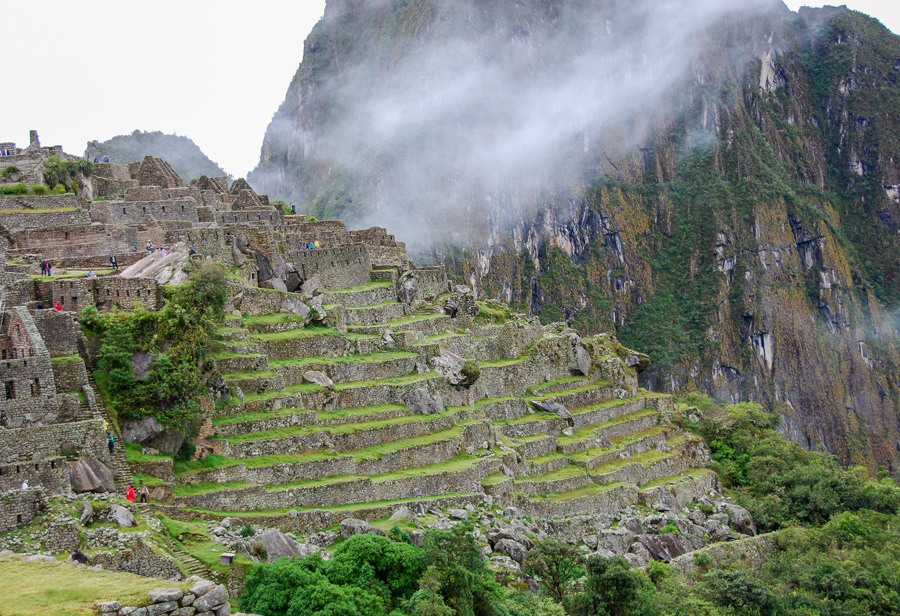
Machu Picchu’s agricultural terraces still have fully functioning irrigation system. The terraces have an elaborate drainage system that keeps rain from washing away the soil during the rainy season.
The Inca grew potatoes, beans and corn.
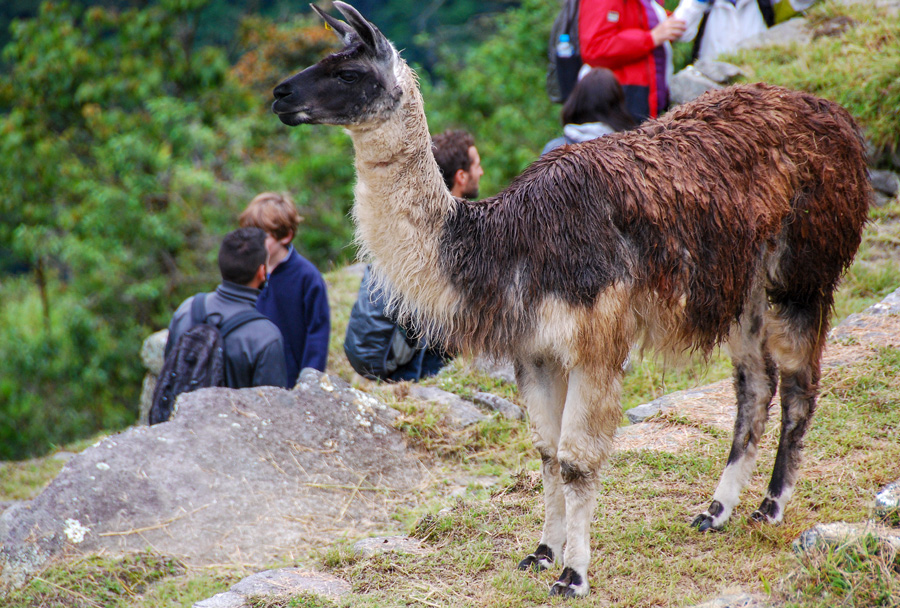
Machu Picchu City Plan
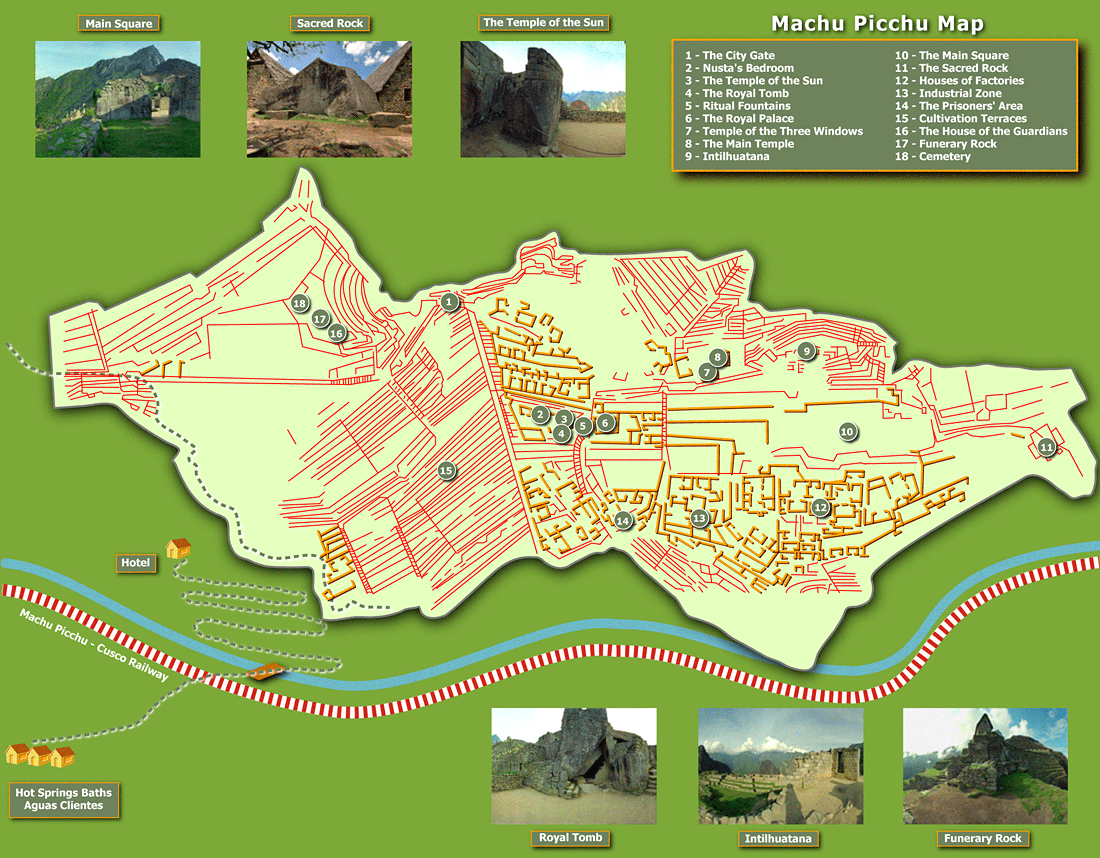
Machu Picchu Takes Your Breath Away
You walk around the city of ruins and feel that you will never, ever experience anything this wonderfully beautiful again. Machu Picchu takes your breath away, literally.
Facts about Machu Picchu
- Machu Picchu is located in the Andes Mountains, 2 430 meters above the sea level and c. 80 km from Cusco.
- Machu Picchu was built around 1440.
- Machu Picchu occupies 325,9 km2.
- It is not all that clear why Machu Picchu was built but according to the leading theory it was constructed by the Inca Pachakuti as a summer residence for the elite. The people of the Machu Picchu were thus members of the Pachakuti’s family and the religious elite, as well as craftsmen and servants ready to cater to every whim of the royal family.
- According to another theory Machu Picchu might have been an important political, religious and financial centre.
- Machu Picchu means old mountain or old peak in Quechua.
- There are 206 houses and c. 60 temples in Machu Picchu.
- It is believed that 600-1000 people lived in Machu Picchu.
- Machu Picchu was discovered by the Hawaiian archaeologist Hiram Bingham in 1911.
- High season: April to October.
- Low season: November through March because of the rainy season, February being the month when it pours down the most. However, to travel to Machu Picchu around the turn of the year is still to recommend since the temperature is cooler (it can get really hot during those summer days), everything is so green and you don’t get squashed by all the tourists.
- Temperature: Since Machu Picchu is located between the Andes and the Amazonas the weather is warm and humid, between 8 and 27 degrees depending on the season.
- To get to there: You either take the train from Cusco, Poroy (4 hrs), or Ollantaytambo (2 hrs). You can also take the four-day Inca Trail trek. However, do not forget to pack a small mirror in your backpack if you decide to hike up there. If you don’t pack one, there is a great risk that you will be pulled out of your tent in the middle of the night by the spirits who reside in the mountain.
- Machu Picchu is a UNESCO world heritage site and one of the seven wonders of the world.
- Some people may experience altitude sickness when the air gets thinner. Also, it is very important to drink great amounts of water so that you don’t get dehydrated. The dehydration is caused by the higher rate of water vapor lost from the lungs when your body is trying to compensate for the thin air.
- Tickets from 70 USD.

